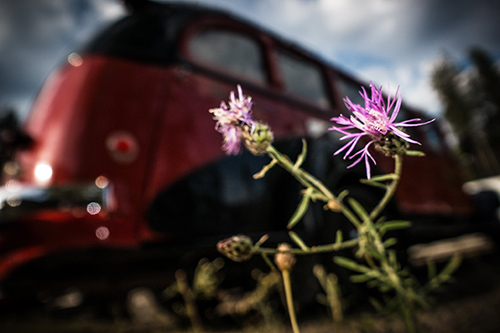Last updated: May 11, 2021
Lesson Plan
Who Grows There?

- Grade Level:
- Middle School: Sixth Grade through Eighth Grade
- Subject:
- Science
- Lesson Duration:
- 90 Minutes
- Additional Standards:
- NGSS MS-LS2-5. Evaluate competing design solutions for maintaining biodiversity and ecosystem services.
Essential Question
What are exotic and noxious plants, and why are the negative impacts? How do you come up with a solution for a long-term problem?
Objective
Students will compile a collection of exotic and noxious plants for identification purposes, and perform a service learning eradication project in their community.
Background
This activity is intended as a service learning project. Students will first learn the problems associated with exotic plants, learn to identify them by gathering specimens and consulting a variety of sources, learn the options and effectiveness of different control measures and then embark on a service project of hand-pulling in a suitable location.
Preparation
- This lesson plan will require about 3 hours in the classroom and indefinite time outside of class and doing service learning project
- Absorbent paper for pressing plants
- Boards and/or books for weight
- Various plant identification books and pamphlets (Many are available from the nearest weed control department. A good resource is "Weeds" available free from the Rocky Mountain Elk Foundation 1-800-CALL-ELK.)
- Gloves and long sleeves and pants for hand-pulling plants
Procedure
1. Read the narrative about exotic plants together with the students. Using the reference materials you have gathered, assign students (teams or individually) to bring in samples of noxious exotic plants from your area (numbers and types will vary). Press them in plant presses or with newspaper and books.
2. Have students make a master booklet of the pressed plants, writing in the identification characteristics, habits and effective control measures of each plant.
3. Check with the park, as well as with local or county weed departments for recommendations of suitable areas (and times of year) for the students to help pull invasive weeds. Some questions for the class to think about: Are chemical herbicides better or worse than the weed infestation they are used for? Why? Which weed do you think is the biggest threat in your area? Why? Why do you think that sudden catastrophic problems (large fires, pollution spills, etc.) get so much public attention compared to slower “pollution” like exotic plants? Are more of our environmental problems incremental (small changes adding up) or catastrophic? What are the best long-term solutions to long-term problems?(Hint: do the actions of individuals count for much?) Do you think you will continue to pull weeds when you see them?
Variations and Extensions:
1. Visit your local weed control office for a tour.
2. Think about other "exotics" that are creating problems for "natives." A good example are how lake trout are affecting bull trout populations. Contact the fisheries division of your regional state office and make a map of lakes containing exotic fish species. Request a presentation on the history of fish introductions in your area.
Assessment Materials
Ask students to compare introductions of new and / or exotic species into a new place in an essay. You may wish to include the effects of “exotic people” (white Europeans into North America, or Native Americans into North America 20,000 years ago, for example).
